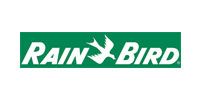Backflow Prevention Testing Services
Request Appointment
Reliable Backflow Prevention Testing
Challenger Irrigation specializes in backflow prevention testing to protect your drinking water from pollutants or contaminants caused by cross-connections within the water system. Serving Hernando County, Pasco County, Pinellas County, and Citrus County, FL, we ensure your water system remains safe and compliant with Florida regulations. We install backflow preventers to protect your:
- Irrigation systems
- Garden hoses
- Secondary water sources
- Swimming pools
- Nearby lakes or ponds
Don't compromise on water safety. Reach out to us Challenger Irrigation for professional backflow prevention testing today. We offer exceptional customer service and transparent scheduling!
Why You Need Backflow Prevention Testing
Annual backflow prevention testing is not just a good practice -- it's a legal requirement. At Challenger Irrigation, we can help you stay in good legal standing. Consider the local annual testing requirements:
- Required by the Florida Safe Drinking Water Act
- Enforcement by Rule 61-555.360(2)
- Mandated yearly by Manatee County Ordinance No. 13-35 for proper function
Choose Challenger Irrigation
When you choose Challenger Irrigation for your backflow prevention needs, you're opting for a trusted local partner with a proven track record. Here's why we're the best:
- Skilled and licensed crews
- Founded in 2004
- Quotes within 48 hours
- Replies to inquiries within 24 hours
- Handling of building permits as required
- One-year warranty on products and services
- Maintenance programs available
- Over 25 years of experience
- Competitive pricing
- Free quotes for new installation
- No subcontractors
Contact Us
Don't wait until it's too late. Ensure the safety of your drinking water and comply with local regulations by scheduling your backflow prevention test with Challenger Irrigation. Our team is ready to provide prompt, professional service tailored to your specific needs. Contact us today to safeguard your water system!



Share On: